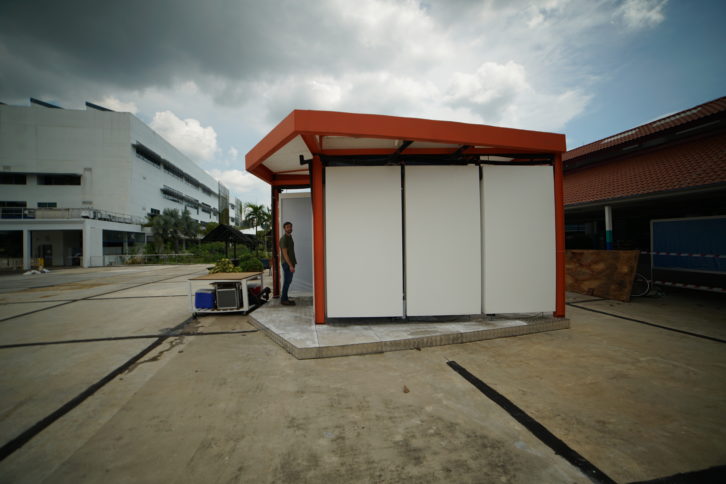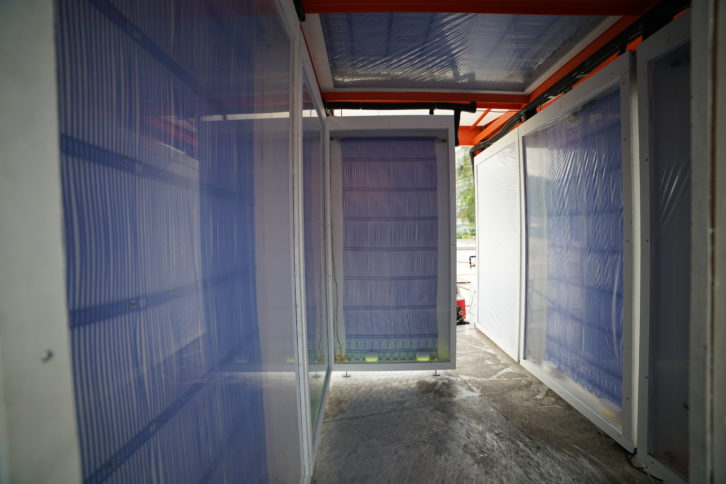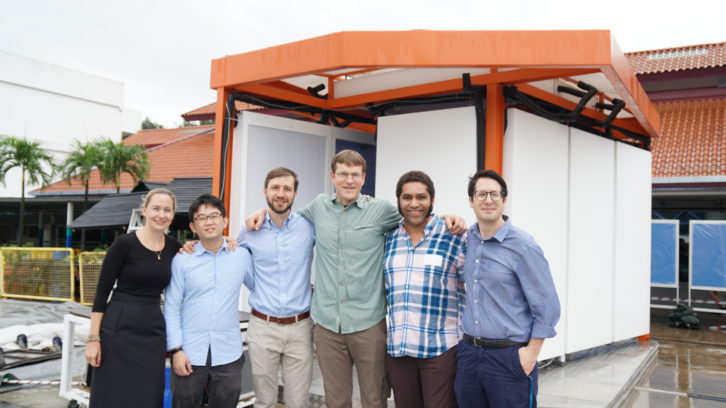
A team of scientists has been developing an alternative cooling solution, which works by absorbing heat and can use around half the energy of traditional systems as a result.
Scientists from the University of British Columbia, Princeton University, the University of California, Berkeley and the Singapore-ETH Centre, focused on the dehumidification process that is a critical function of today’s air conditioning systems.
“Air conditioners work by cooling down and dehumidifying the air around us – an expensive and not particularly environmentally friendly proposition,” explains project co-lead Adam Rysanek, from the University of British Columbia. “The Cold Tube works by absorbing the heat directly emitted by radiation from a person without having to cool the air passing over their skin. This achieves a significant amount of energy savings.”

What is it?
The Cold Tube is a system of rectangular wall or ceiling panels that are kept cold by chilled water circulating within them. Since heat naturally moves by radiation from a hotter surface to a colder surface, when a person stands beside or under the panel, their body heat radiates towards the colder panel. This creates a sensation of cooling like cold air flowing over the body even if the air temperature is quite high.
Although these types of cooling panels have been used in the building industry for several decades, what makes the Cold Tube unique is that it does not need to be combined with a dehumidification system. Just as a cold glass of lemonade would condense water on a hot summer day, cooling down walls and ceilings in buildings would also condense water without first drying out the air around the panels. The researchers behind the Cold Tube conceived of an airtight, humidity-repelling membrane to encase the chilled panels to prevent condensation from forming while still allowing radiation to travel through.
Did it work?
The Cold Tube was put to the test in Singapore last year, where most of the 55 participants invited to come and test it out reported feeling “cool” or “comfortable” in spite of the 30 °C (86 °F) temperatures.
“Because the Cold Tube can make people feel cool without dehumidifying the air around them, we can look towards shaving off up to 50 per cent of typical air conditioning energy consumption in applicable spaces,” says team member Eric Teitelbaum, who oversaw the demonstration while working at the Singapore-ETH Centre.
How will we use it?
The current design of the Cold Tube makes it a suitable solution for outdoor events, such as summer fairs, concerts and markets. The ultimate aim is to continue developing the system so that it can be used in place of traditional air conditioning in homes and offices, where it might even offer some other benefits, as well.
“Because the Cold Tube works independently of indoor air temperature and humidity, keeping windows open in our increasingly hot summers while still feeling comfortable becomes possible,” says Princeton University’s Forrest Meggers, project co-lead. “The Cold Tube can offer relief in different regions, from North American homes and offices that currently rely on standard HVAC systems to developing economies that foresee significant need for cooling in the coming half-century.”
COVID-safe?
“The COVID-19 pandemic has brought to the public’s awareness how sensitive our health is to the quality of the air we breathe indoors. Specifically, we know that some of the safest spaces in this ‘new normal’ are outdoor spaces,” said Rysanek. “As the climate changes and air conditioning becomes more of a global necessity than a luxury, we need to be prepared with alternatives that are not only better for the environment, but also our health. The idea of staying cool with the windows open feels a lot more valuable today than it did six months ago.”
 A research paper describing the Cold Tube was published in the journal Proceedings of the National Academy of Sciences.
A research paper describing the Cold Tube was published in the journal Proceedings of the National Academy of Sciences.
Source: University of British Columbia










